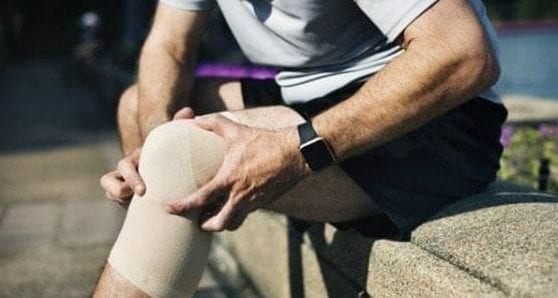By Eric Bohm
University of Manitoba
and Ivan Wong
Arthroscopy Association of Canada
Nearly half of Canadians aged 65 and over experience osteoarthritis in their knees. Osteoarthritis is the most common form of arthritis and occurs when the protective cartilage on the ends of bones wears down over time leading to pain, stiffness and decreased mobility. It frequently occurs in the hips and knees – and can be quite painful.
To help improve mobility and treat joint pain, it has been common for older adults with osteoarthritis of the knee to be referred to an orthopedic surgeon, like us, for a knee arthroscopy.
As orthopedic surgeons, we want to ensure that our surgical procedures provide high-value care to patients and do more good than harm. Unfortunately, this is often not the case for knee arthroscopy in older adults with arthritis.
Arthroscopy of the knee for arthritis involves making several small cuts to insert a small camera and instruments to view the joint and trim loose cartilage and wash the joint out.
Now there is a growing body of research showing that this procedure may not be necessary for most older adults since it usually has the same long-term outcomes as non-operative and less invasive treatment.
Alternative treatments can include weight loss, physiotherapy, exercise, over-the-counter pain medicines such as Tylenol, anti-inflammatories and pain-relieving joint injections.
Knee arthroscopy, on the other hand, is a surgical procedure that typically requires spinal or general anesthetic; there’s always a risk of infections or structural damage to the joint.
Does this mean that all arthroscopy shouldn’t be performed?
No. Rather, arthroscopy needs to be done for the right conditions and on the right patients. For example, meniscus repair surgery for a younger person with a knee injury can help improve function, treat pain and increase mobility.
What’s at stake?
Unnecessary surgeries mean that our time as surgeons, as well as health-care system resources such as operating rooms and staff, are tied up doing surgeries that don’t add much value to Canadian patients. These resources could be directed towards other orthopedic procedures that provide pain relief and improved function yet have long waiting lists, such as spine surgery and hip and knee replacements.
For older patients with osteoarthritis in the knee, arthroscopy is more often than not the wrong choice.
As surgeons, we advise our patients on alternatives to surgery and reflect on our own practice habits. We’re also championing the Choosing Wisely Canada campaign to our colleagues and patients far and wide. Recently, the Canadian Orthopaedic Association, the Canadian Arthroplasty Society and the Arthroscopy Association of Canada joined to release a set of recommendations on best practices.
The first recommendation is against arthroscopy for initial treatment and management of osteoarthritis in the knee.
It’s well established that physicians tend to overestimate the benefits of our procedures and often underestimate harms. Recent research shows that the same misconceptions about harms and benefits of common procedures are held by patients.
A culture shift is needed for surgeons, patients and the public on treatment expectations for knee osteoarthritis. Saying no to arthroscopic surgery, and instead undertaking non-operative management, is a challenge for clinicians and patients alike.
Thoughtful, evidence-based utilization of our health-care resources will help to improve appropriate care for all Canadians.
Dr. Eric Bohm is a professor at the University of Manitoba and an orthopedic surgeon with the Concordia Joint Replacement Group in Winnipeg. Dr. Ivan Wong is an associate professor at Dalhousie University and an orthopedic surgeon at the QEII Health Sciences Centre in Halifax. He is also the president of the Arthroscopy Association of Canada.
Eric and Ivan are Troy Media Thought Leadera. Why aren’t you?
The views, opinions and positions expressed by columnists and contributors are the author’s alone. They do not inherently or expressly reflect the views, opinions and/or positions of our publication.




